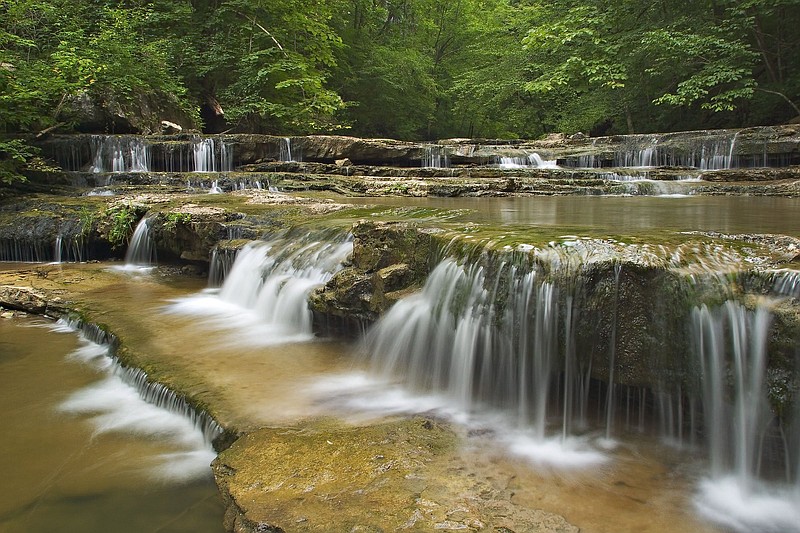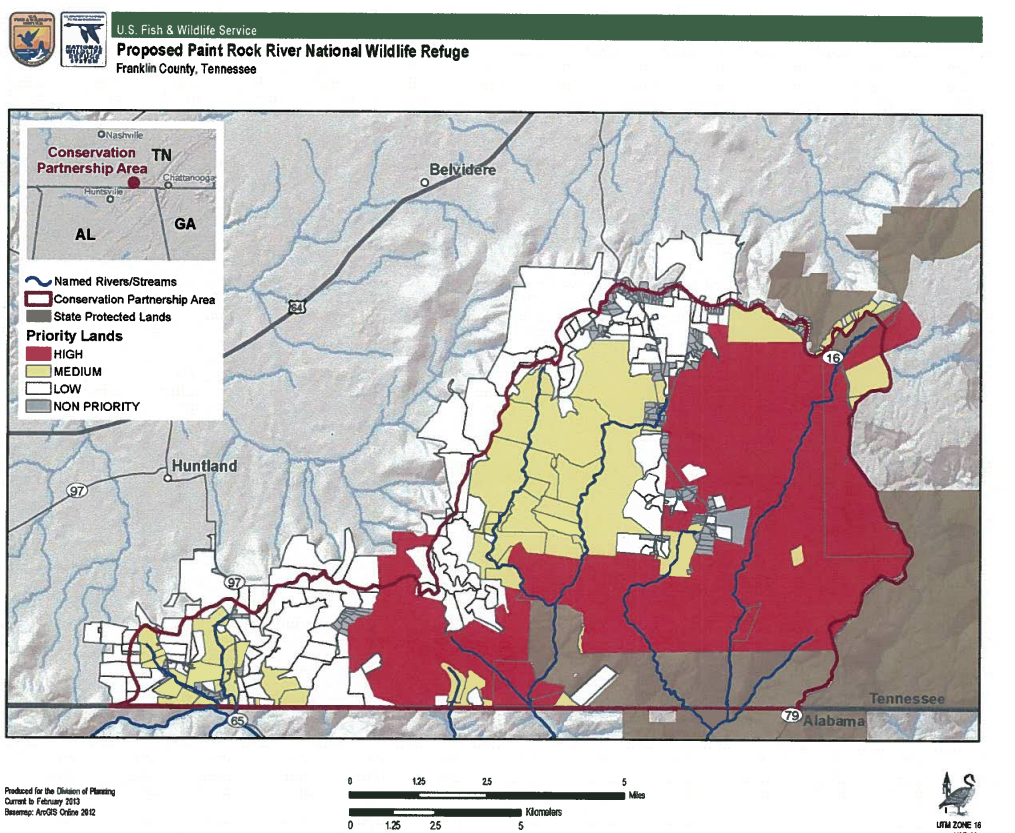Nearly 100 acres on the Southern Cumberland Plateau in Franklin County, Tennessee, will officially become home next month to the Paint Rock River National Wildlife Refuge, the newest addition to about 500 federal wildlife refuges across the U.S.
"This transaction and the property's upcoming transfer to the U.S. Fish & Wildlife Service in September will officially establish the long-awaited refuge," spokesperson for The Nature Conservancy, Jessica Underwood, said in a news release.
Thanks to the efforts of conservationists, local residents and state and federal agencies, decades of work helped the organizations realize a dream of establishing a public wildlife refuge within the Southern Cumberland Plateau region along the Tennessee-Alabama border, and now that is becoming a reality, Underwood said.
Earlier this summer, partner agencies acquired 87 acres of land from the Niedergeses family in Franklin County, she said. The land adjoins the Tennessee Wildlife Resources Agency's Bear Hollow Mountain Wildlife Management Area. The largest portion of the $350,000 acquisition was provided by Open Space Institute, with additional support coming from The Tucker Foundation and others.
The designation is deeply meaningful, according to conservancy officials.
"The refuge will help to protect more ecological diversity on our Cumberland Plateau and enhances climate change resilience," the conservancy's director of land protection, Gabby Lynch, said Friday in an emailed statement. "This milestone also secures crucial headwaters for ecosystems and downstream recreation, promising the start of a resilient legacy."
(READ MORE: Sandhill cranes draw hunters annually to Chattanooga area)
Federal wildlife officials credit the Biden administration's America the Beautiful plan for giving legs to the idea and fueling efforts to create the refuge. The refuge was proposed and authorized by the federal government in 2013. The plan's goals aim to reduce effects on the environment by a warming planet through the creation of corridors of protected and connected lands so animals can move from one region to another.
The Paint Rock River's headwaters lie partly in Tennessee, where they flow toward the confluence of Estill Fork and Hurricane Creek in the hilly plateau terrain of Northwest Jackson County, Alabama. The idea of the refuge, federal officials said early in the effort, is to protect the headwaters first, so the benefits flow downstream. Any efforts toward creating a national wildlife refuge where the Paint Rock River flows through Alabama would be a future conversation.
For those in the conservation and scientific communities, it is widely understood and agreed that connected networks of resilient lands and waters must be conserved at a large scale to allow nature to adapt to climate change, according to Underwood.
"The Niedergeses property is located within a matrix of public and private forested lands that will be essential for climate change adaptation and resiliency for generations to come," she said. "The Appalachian Mountains, which include the Cumberland Plateau region in Tennessee and Alabama, shelter a rich variety of species and diverse ecological and human communities. In fact, the Appalachians are on par with the Amazon rain forest and Kenya's grasslands as one of the most globally important landscapes for climate change resilience and conserving biodiversity."
The wildlife service's supervisor over wildlife refuges in Tennessee, Emory Hoyle, said a variety of species will benefit.
"The Paint Rock River area is teeming with biodiversity, including more than 100 species of fish, mussels, and plants — some found nowhere else in the world," Hoyle said in a statement. "When established, and open, visitors and the local community will enjoy hunting, fishing, hiking, photography and abundant wildlife. We look forward to working with landowners interested in selling or donating their land, or establishing conservation easements, to fulfill the purpose of this refuge."
Contact Ben Benton at bbenton@timesfreepress.com or 423-757-6569.

